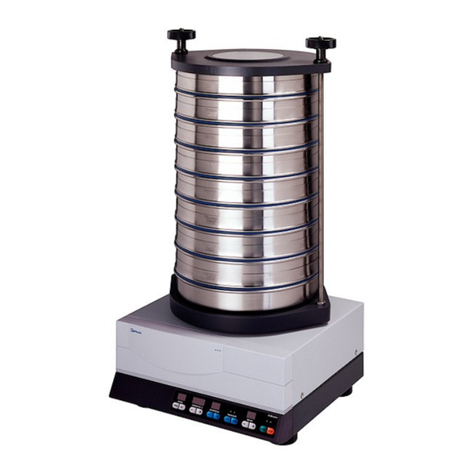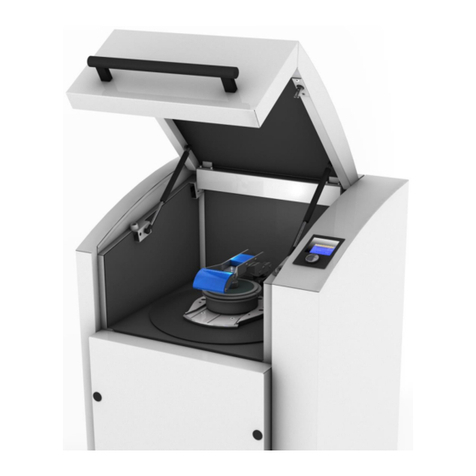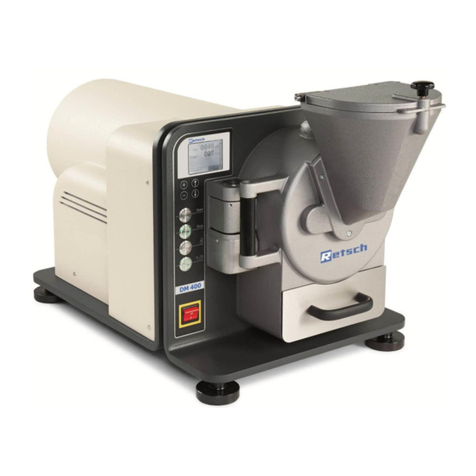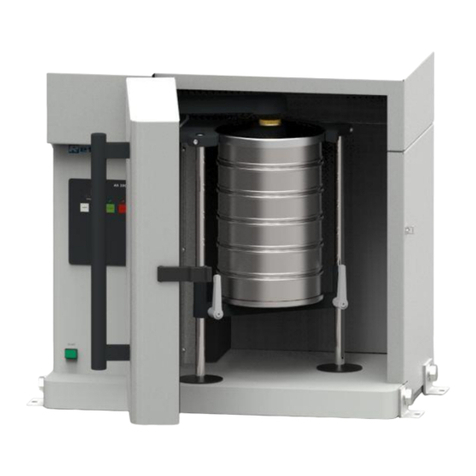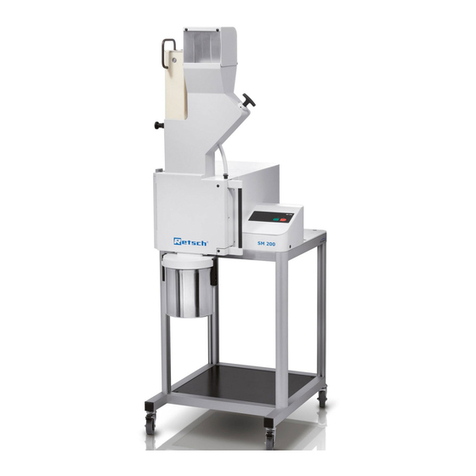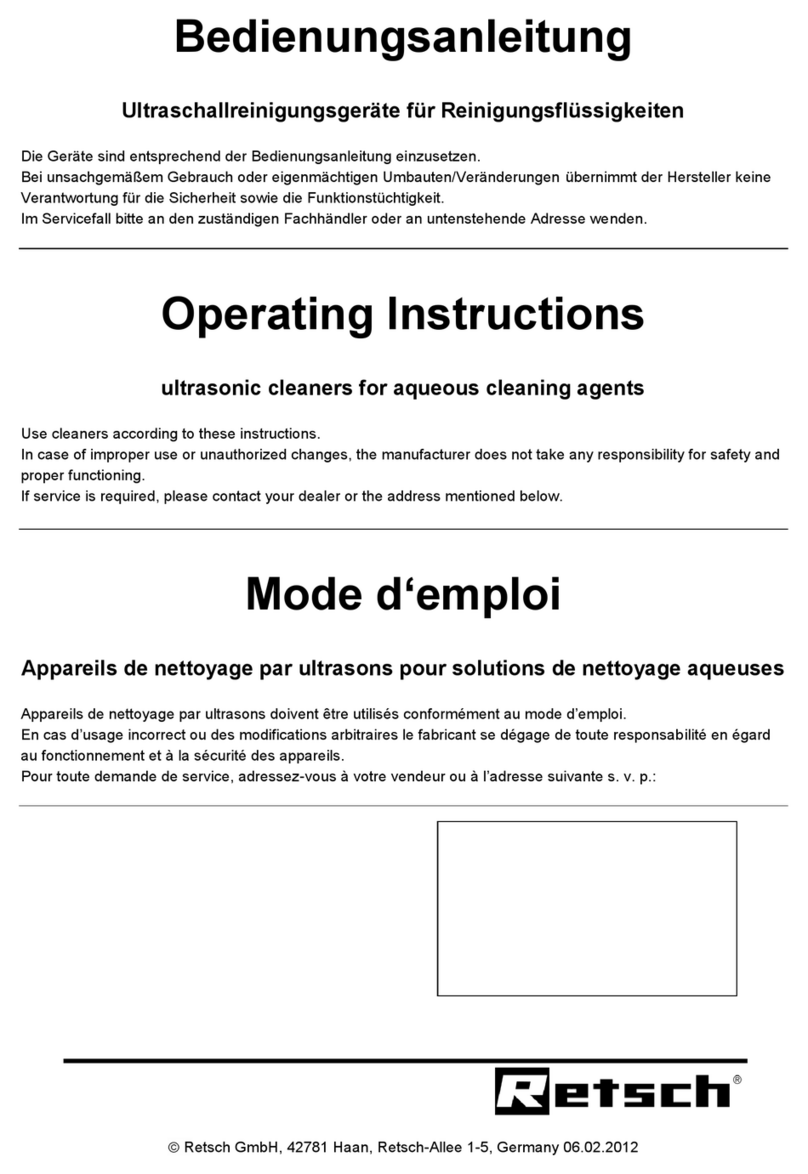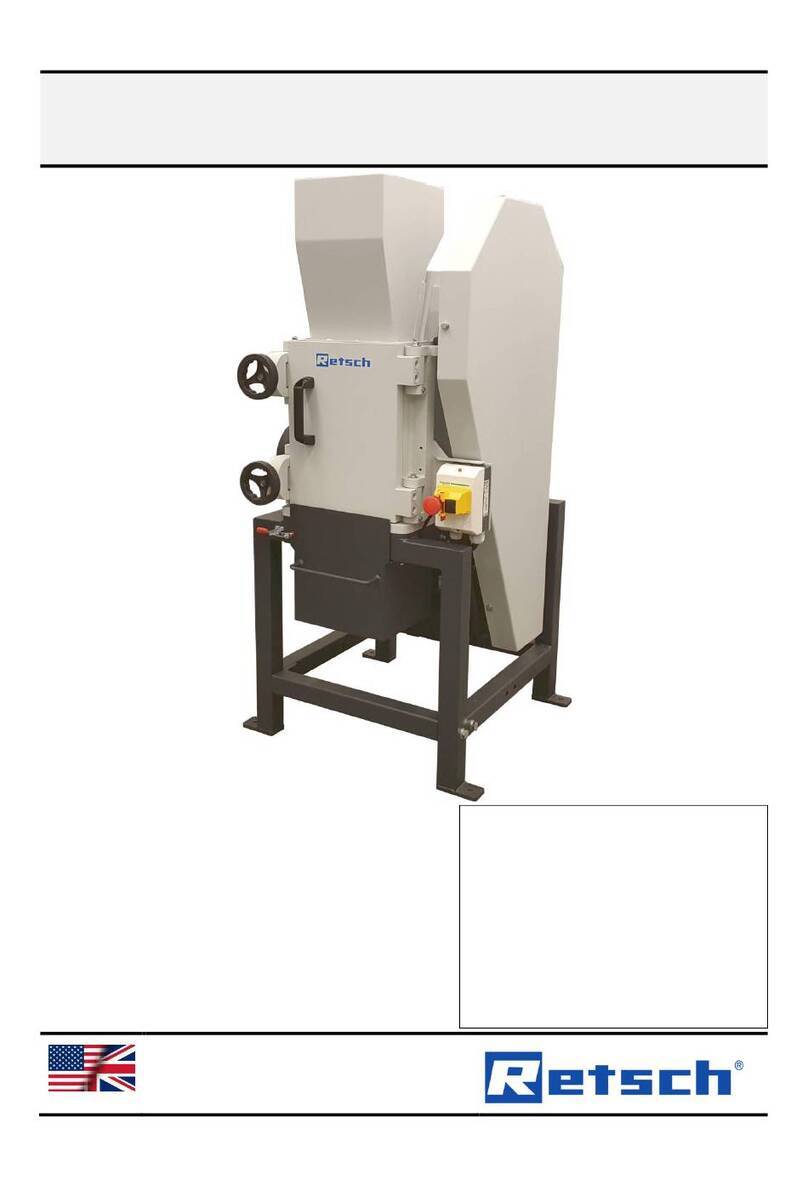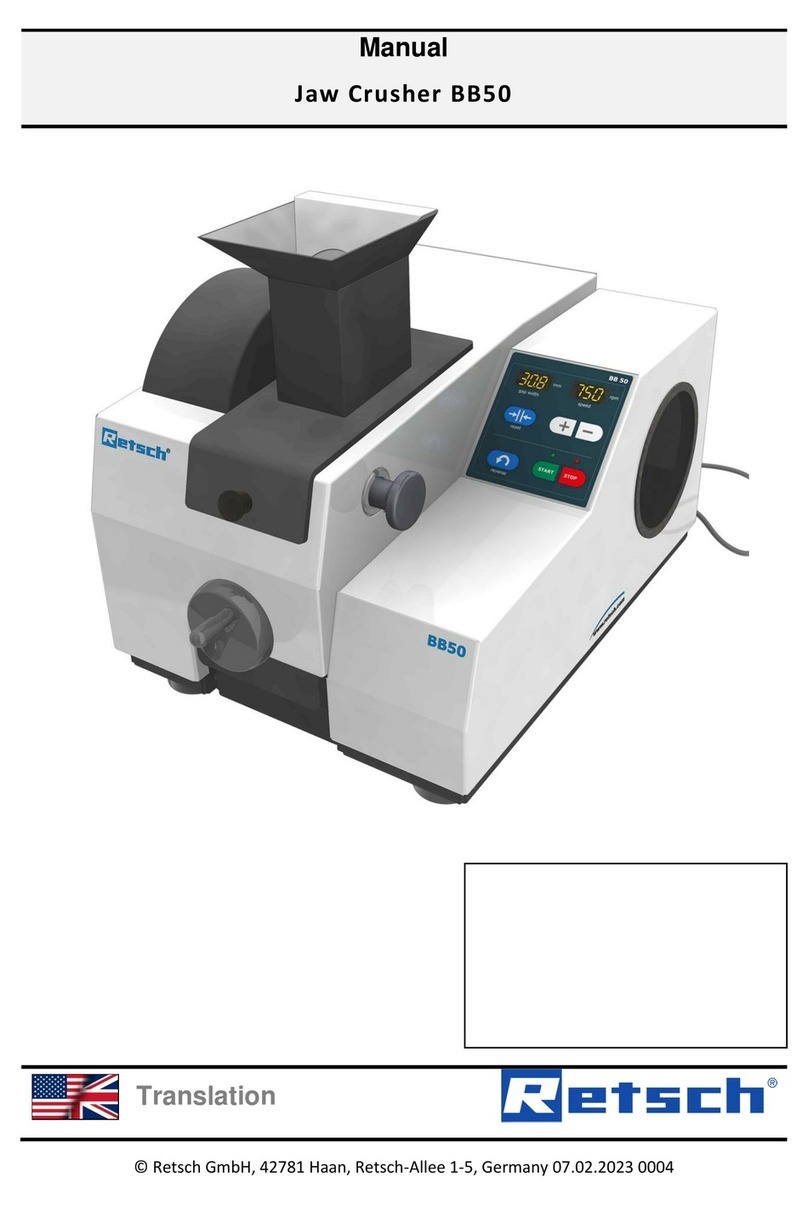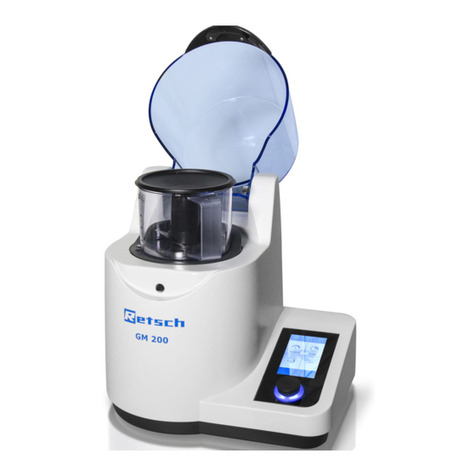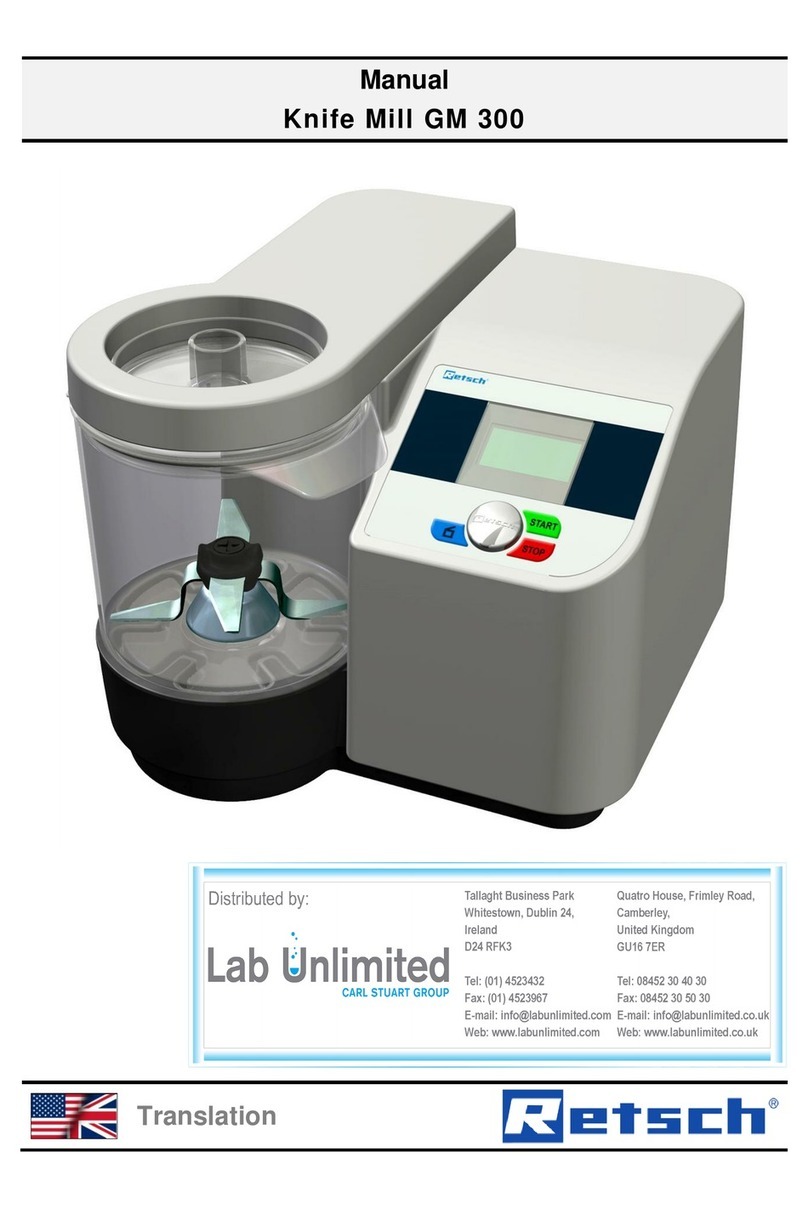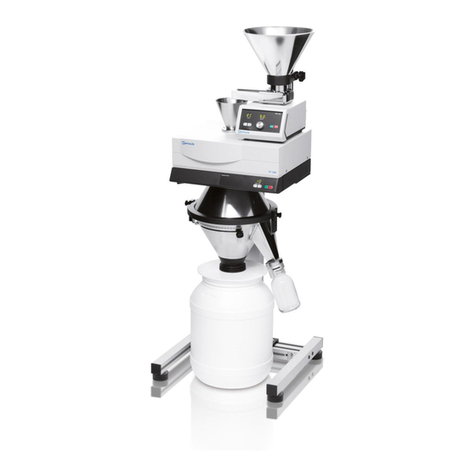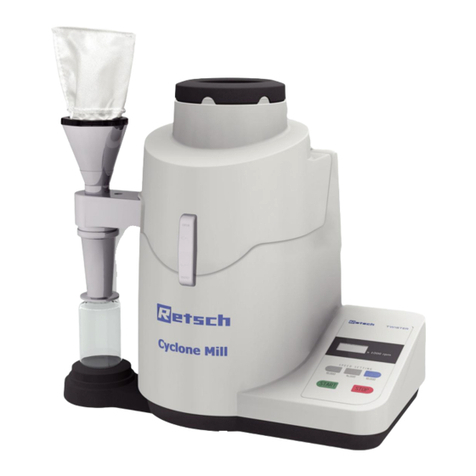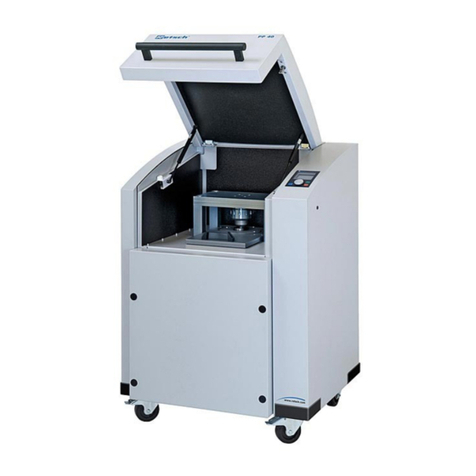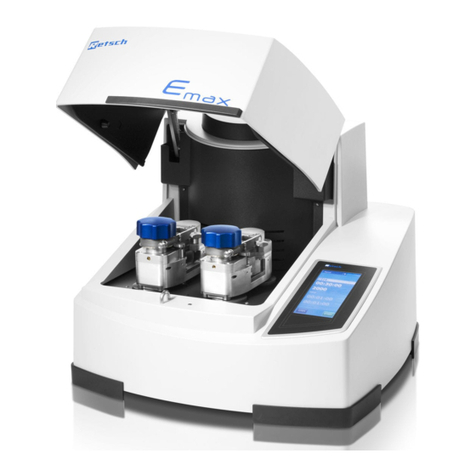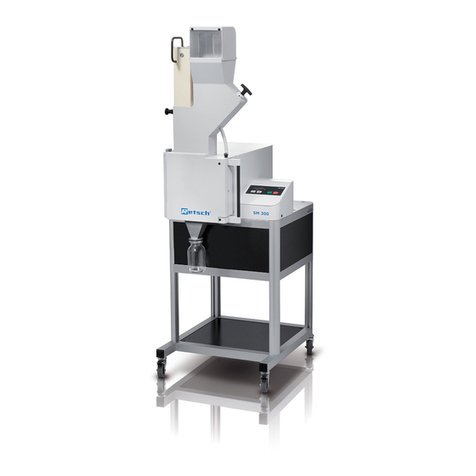6.3 Specifications regarding grinding balls and grinding jars ................................................................ 55
6.4 View of grinding jars ........................................................................................................................ 56
6.5 Opening aid...................................................................................................................................... 57
6.5.1 Grinding Jar Identification............................................................................................................ 58
6.5.2 Ball Sizes and Speeds................................................................................................................. 58
6.5.3 Recommended maximum ball sizes............................................................................................ 58
6.5.4 Recommended Grinding Jar Filling ............................................................................................. 58
6.6 Safety instructions on the handling of liquid nitrogen...................................................................... 59
6.7 Oxygen deficiency ........................................................................................................................... 59
6.7.1 Dangers ....................................................................................................................................... 59
6.7.2 Causes......................................................................................................................................... 59
6.7.3 Recommendations....................................................................................................................... 60
6.7.4 General conduct in the case of an accident ................................................................................ 60
6.8 Cryogenic burns............................................................................................................................... 60
6.8.1 Dangers ....................................................................................................................................... 60
6.8.2 Causes......................................................................................................................................... 61
6.8.2.1 Burns through splashes....................................................................................................... 61
6.8.2.2 Burns through contact.......................................................................................................... 61
6.8.3 Recommendations....................................................................................................................... 61
6.8.4 General rules of conduct for splashes with liquid nitrogen.......................................................... 61
6.8.4.1 To the eyes.......................................................................................................................... 61
6.8.4.2 On the skin........................................................................................................................... 61
6.9 Special grinding methods ................................................................................................................ 61
6.9.1 Cryogenic grinding with the cryoPad........................................................................................... 61
6.9.2 Cryogenic grinding with the optional cryokit ................................................................................ 62
6.10 Wet grinding..................................................................................................................................... 63
6.10.1 Wet Grinding with Highly Flammable Materials....................................................................... 63
6.11 Preparing the grinding jar ................................................................................................................ 63
6.12 Changing the grinding jar seal for cryogenic grinding ..................................................................... 64
6.12.1 Opening the grinding jar .......................................................................................................... 65
6.12.2 Filling the grinding jar............................................................................................................... 67
6.12.3 Closing the grinding jar............................................................................................................ 68
6.13 Inserting the Grinding Jar ................................................................................................................ 69
6.13.1 Opening the grinding jar support ............................................................................................. 70
6.13.2 Inserting the grinding jar .......................................................................................................... 71
6.13.3 Closing the grinding jar support............................................................................................... 74
6.14 Grinding process.............................................................................................................................. 75
6.14.1 Starting the grinding process................................................................................................... 76
6.15 Removing the sample material........................................................................................................ 77
7Device control...................................................................................................................................... 81
7.1 Device control with cryoPad ............................................................................................................ 81
7.2Device control without cryoPad ....................................................................................................... 81
7.3 Menu interface on the touchscreen ................................................................................................. 82
7.4 Function elements ........................................................................................................................... 83
7.5 Menu navigation .............................................................................................................................. 87
7.6 Main menu....................................................................................................................................... 88
7.7 Controlling the grinding process...................................................................................................... 89
7.8 Starting the grinding process........................................................................................................... 90
7.9 Pausing the grinding process .......................................................................................................... 90
7.10 Stopping the grinding process......................................................................................................... 90
7.11 Program mode................................................................................................................................. 90
7.11.1 Select a Program..................................................................................................................... 92
7.11.2 Edit a Program......................................................................................................................... 95
7.11.3 Save a Programme.................................................................................................................. 96

